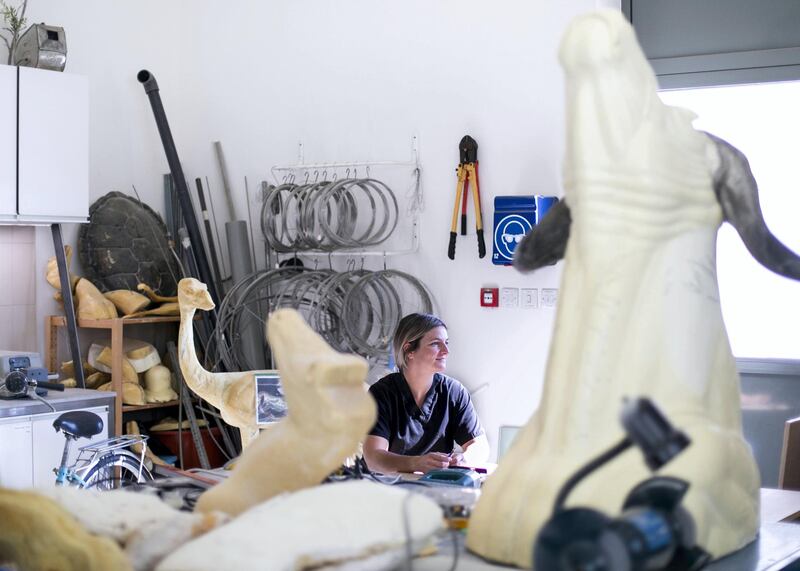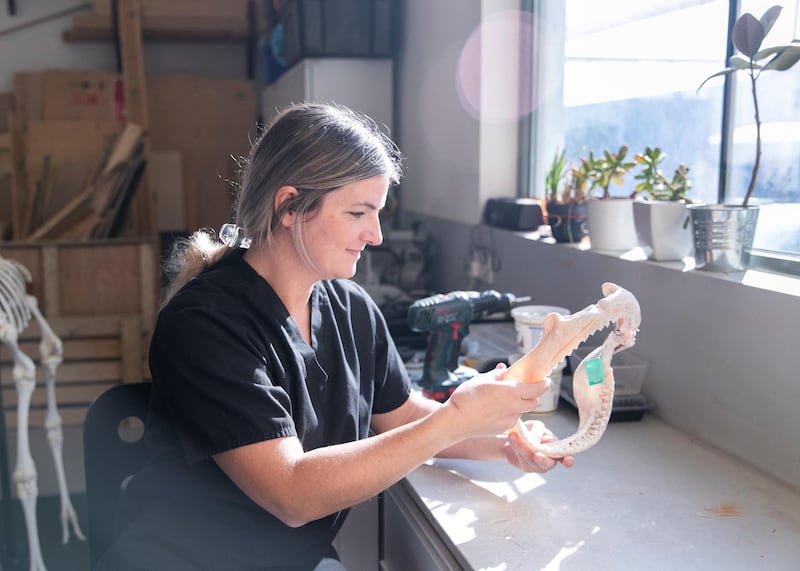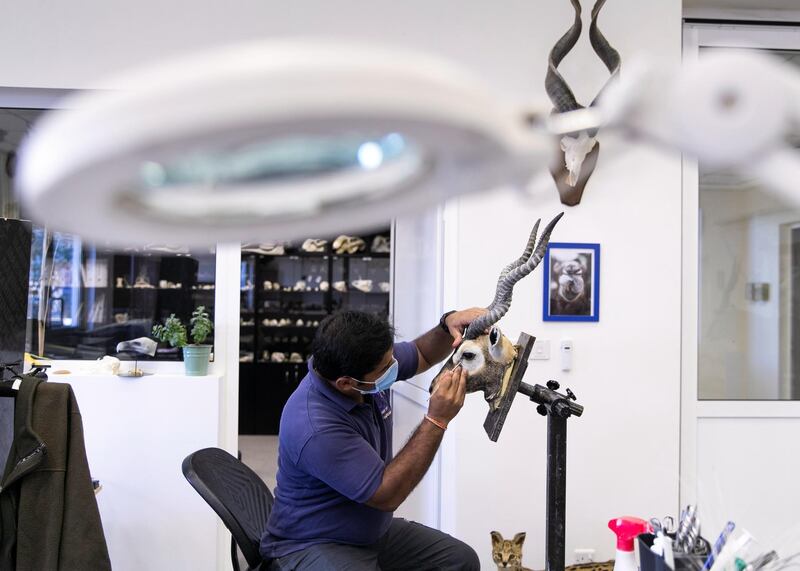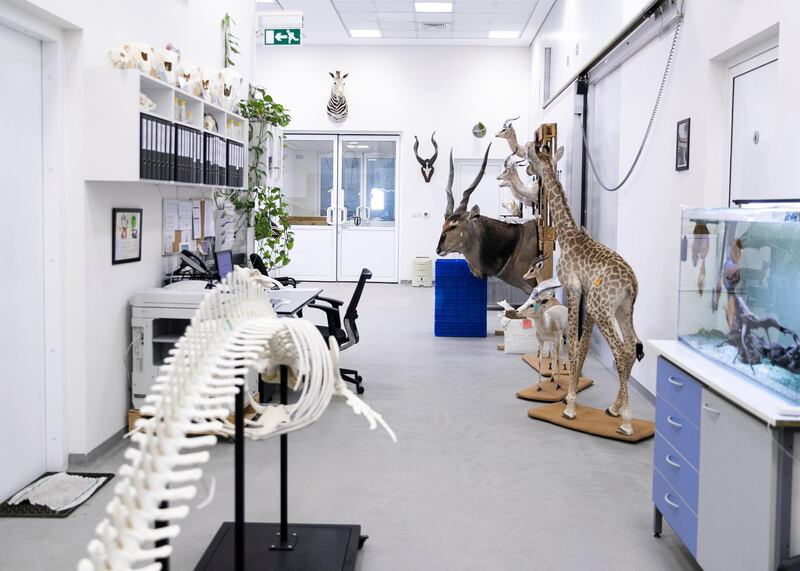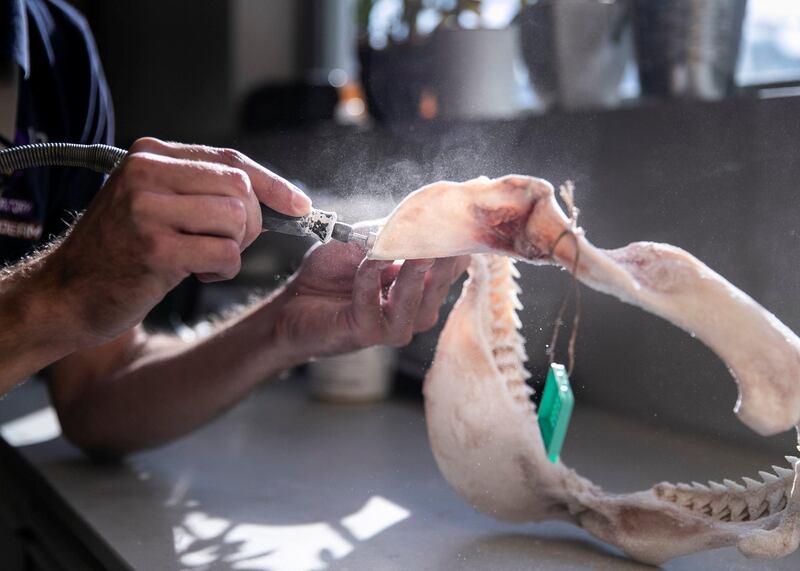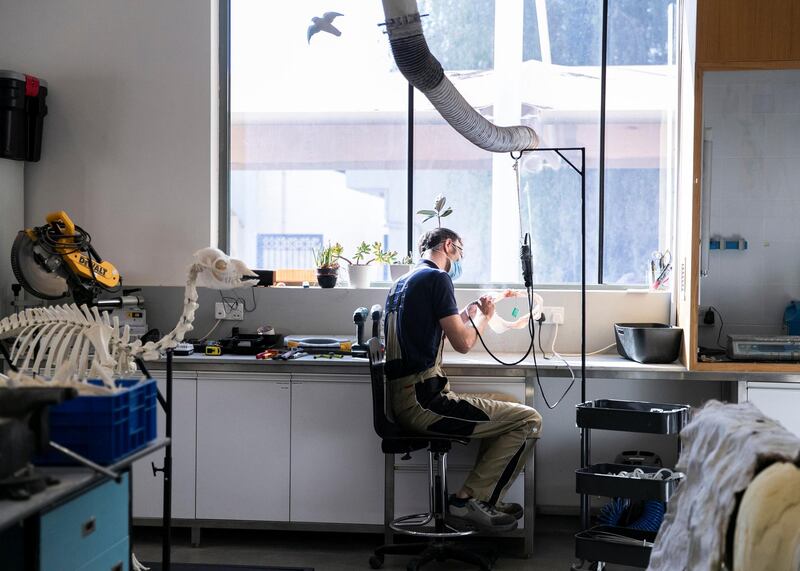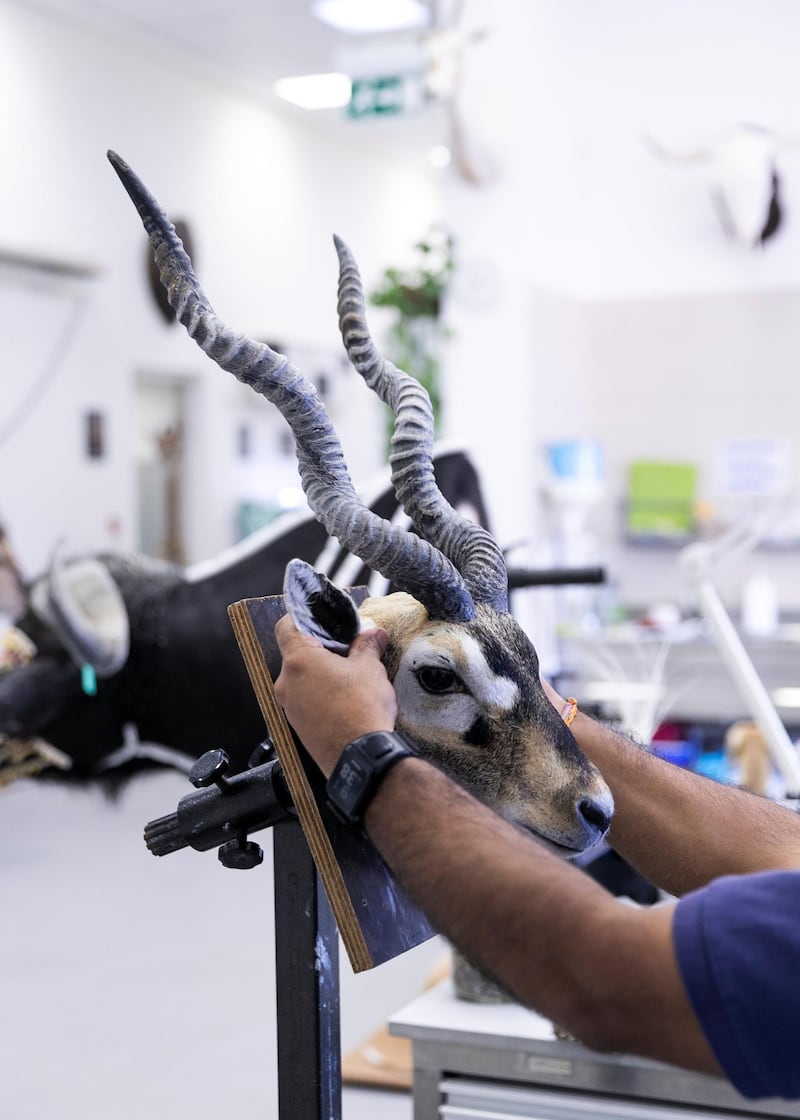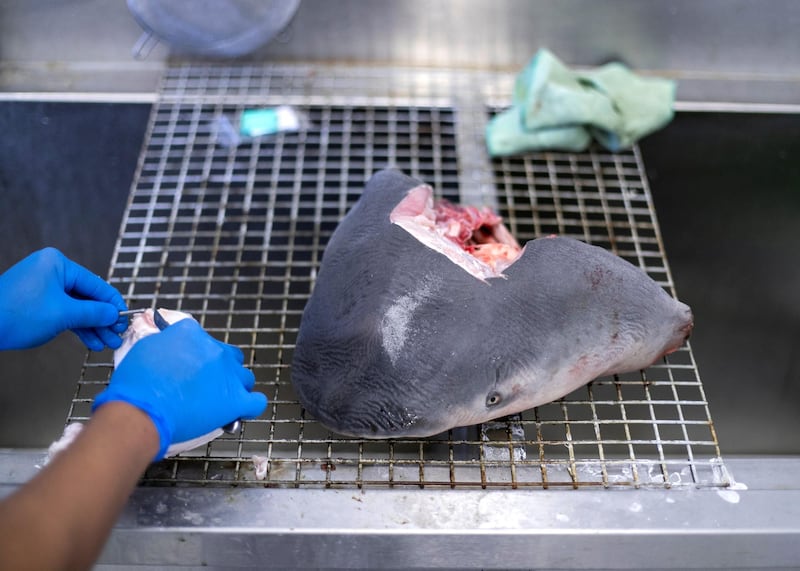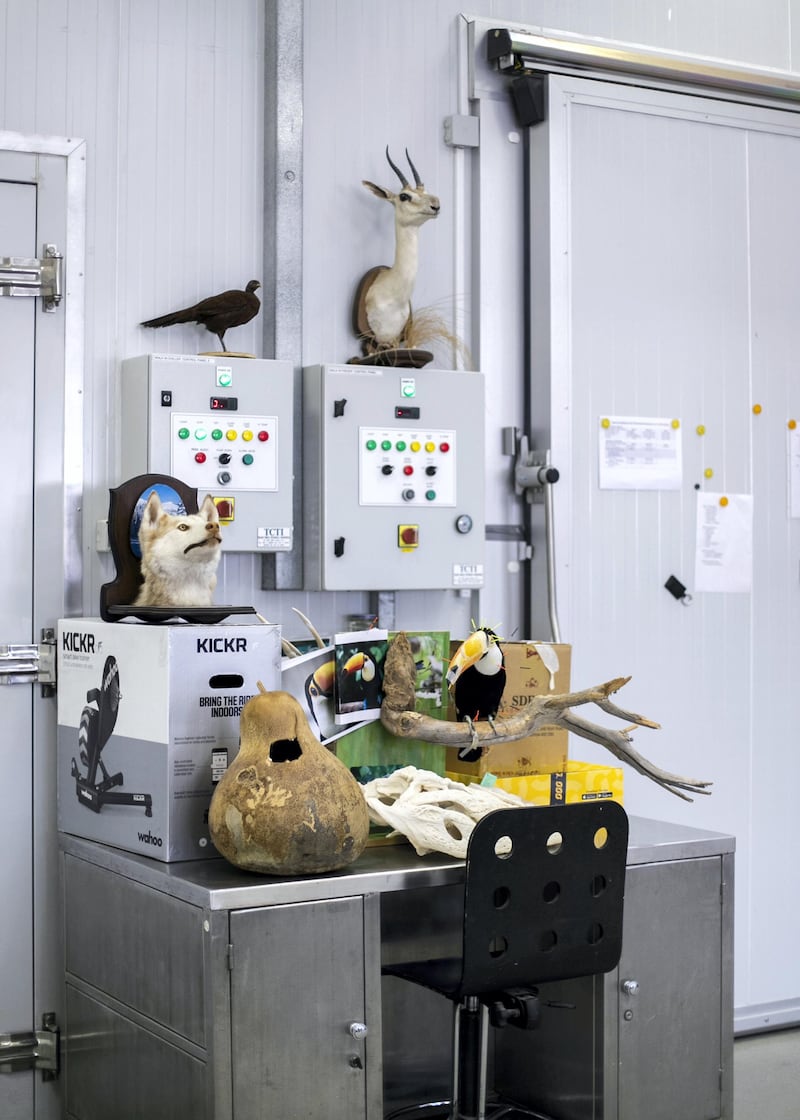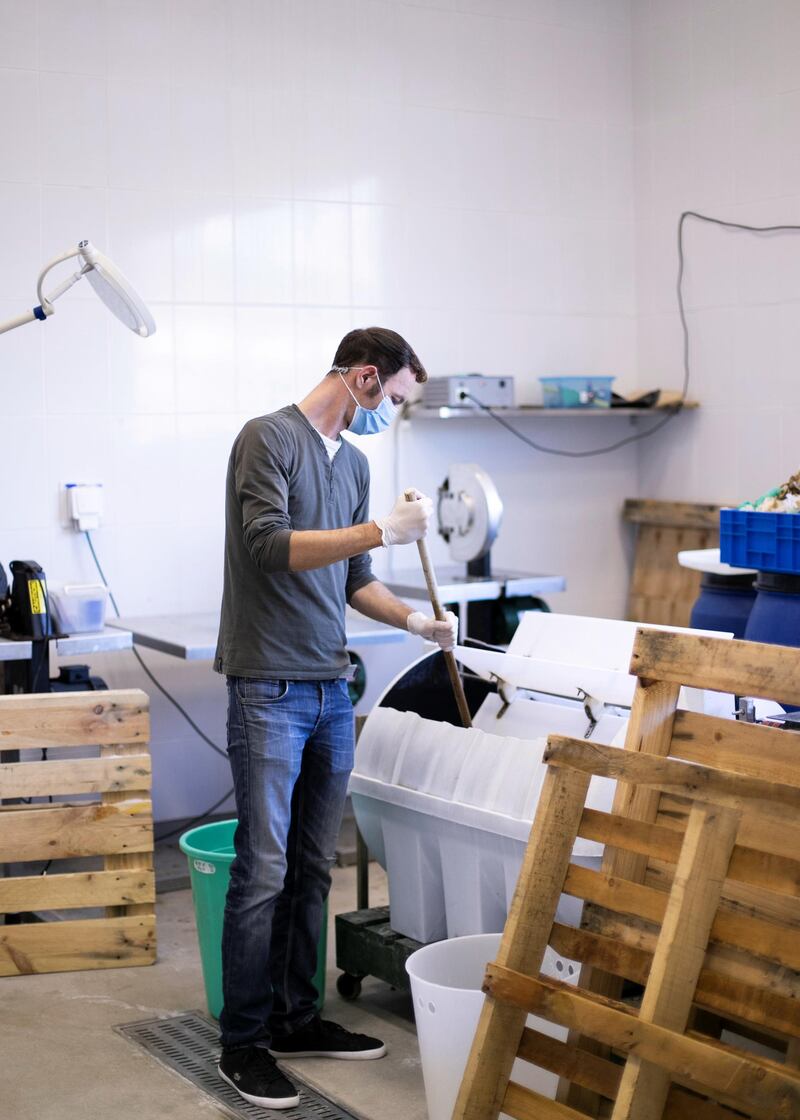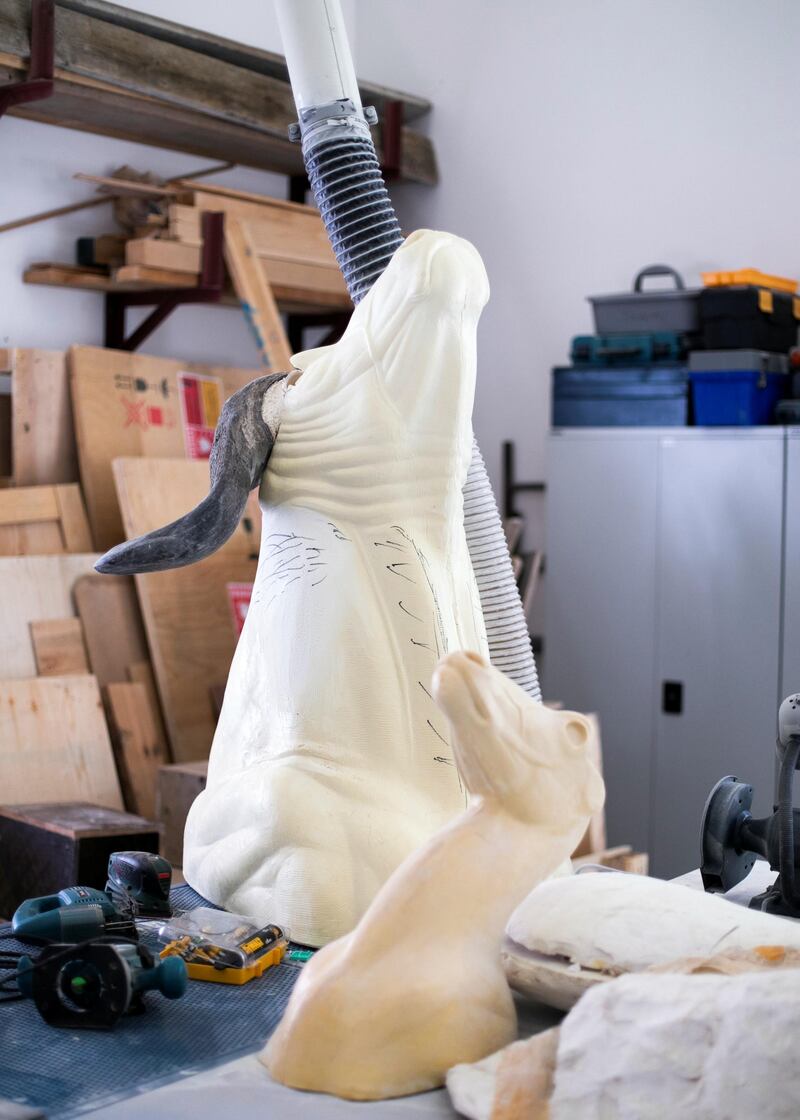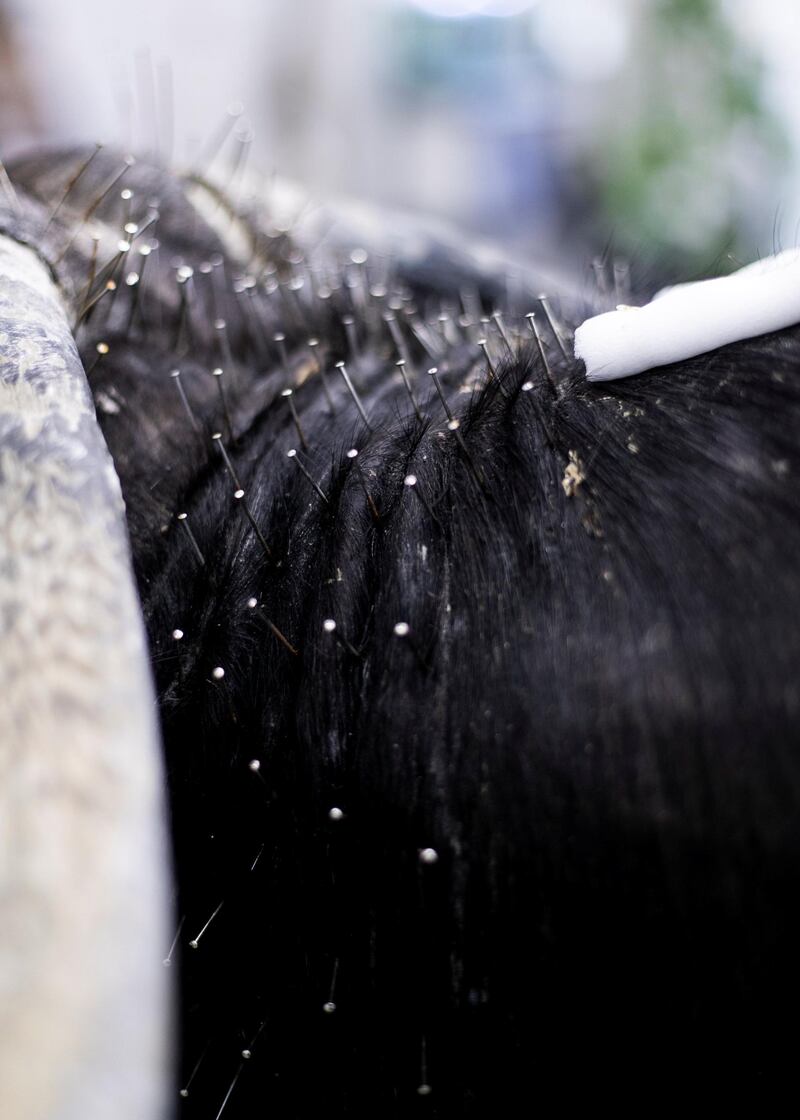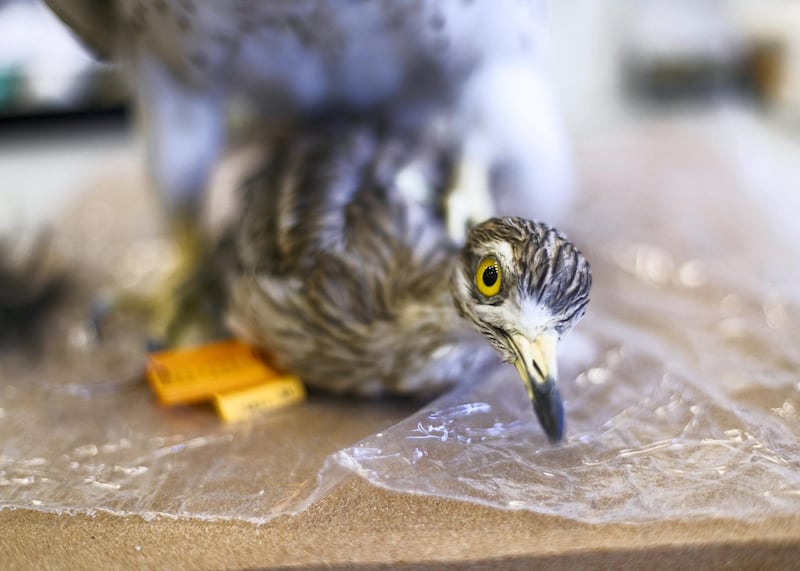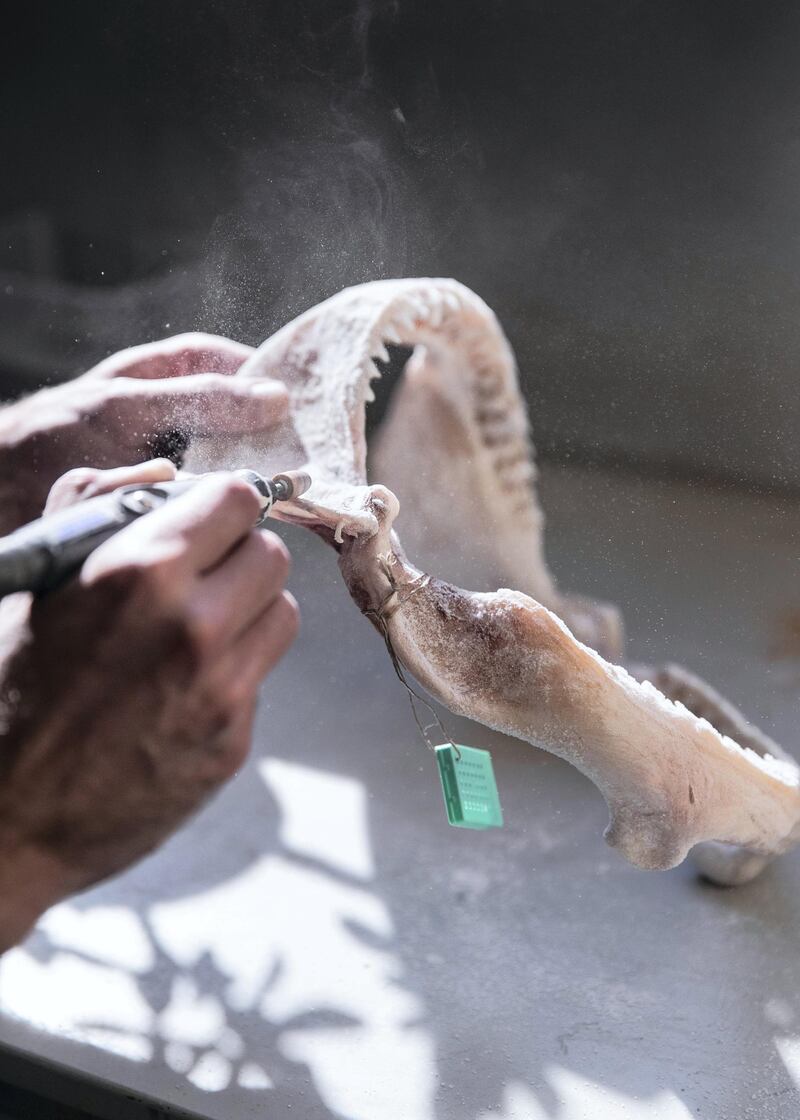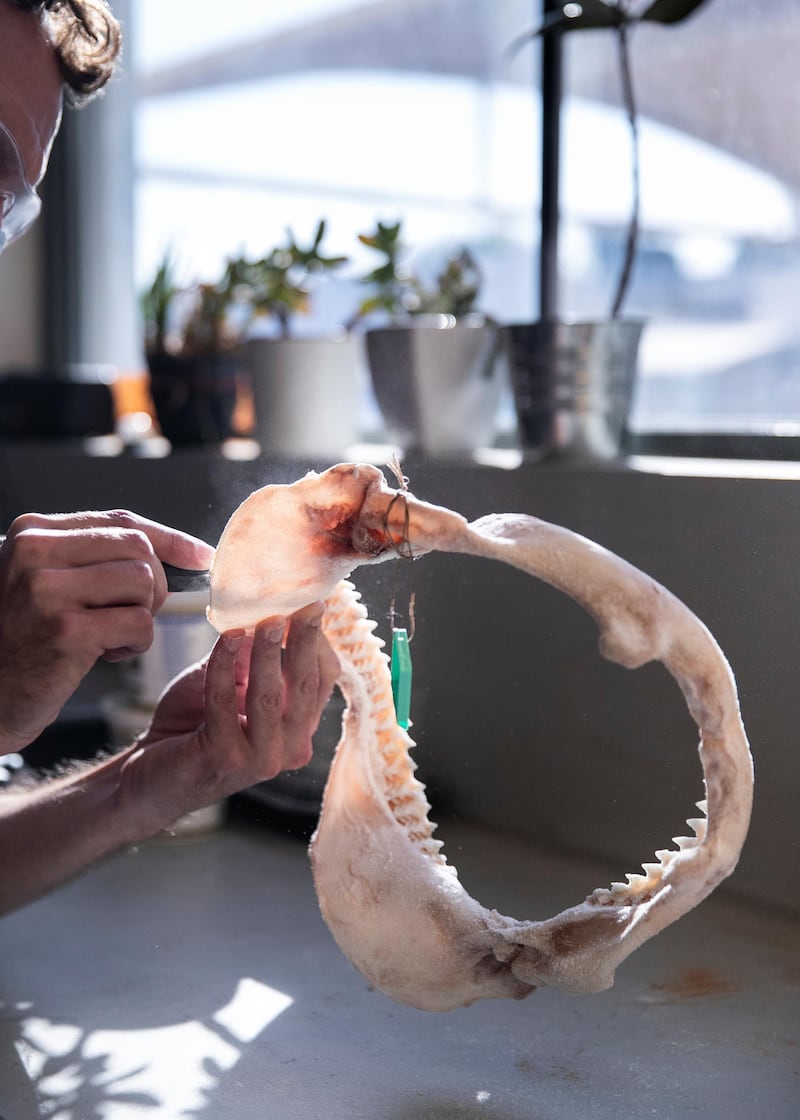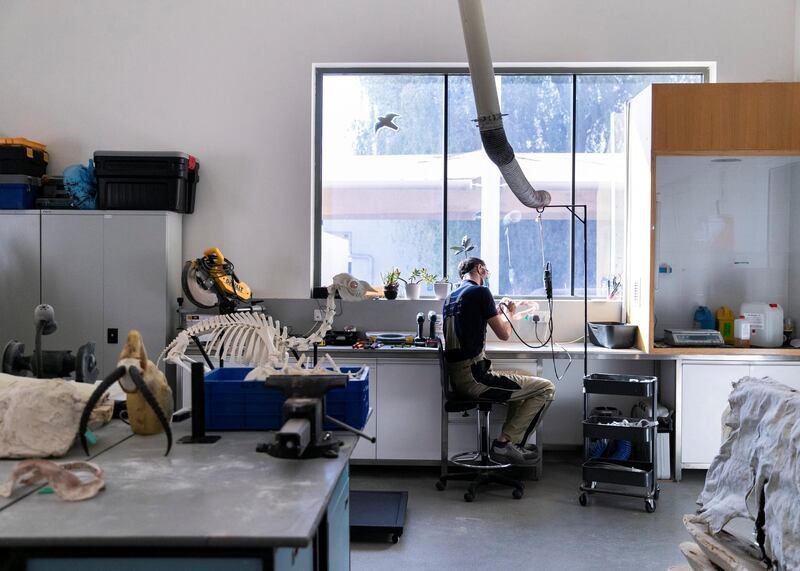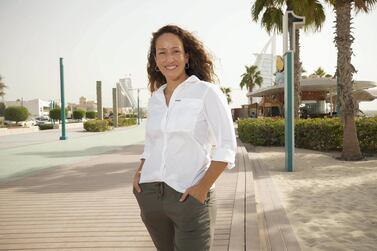In a quiet corner of Dubai, a Cape buffalo sits opposite a colourful toucan, while a graceful saluki sits staring at a baby giraffe.
Although each animal appears lifelike, they are all well and truly stuffed.
Dubai's Central Veterinary Research Laboratory is home to one of only a few taxidermy centres in the country, and is not a place for the faint-hearted.
Animal skins and skeletons adorn the boardroom, and in the tanning room – where animal skins are chemically processed for mounting – carcasses lay waiting to be prepared for life after death.
On the day The National visited, a worker is skinning the head of a shark that was the victim of a fisherman's by-catch.
“Most people think we kill the animals for taxidermy, which is just terrible,” said head taxidermist Corina Berners-Schultheis, from Germany.
“The majority of animals we get through our doors die of natural causes or are put down because of illness or injury.
“When people find out what I do for a living they ask so many questions.
“Depending on the type of guests you have at the dinner table, it’s either a conversation that interests people or leaves them feeling squeamish.”
The team has preserved everything from insects to tigers, and black-tip reef sharks to hippopotamuses, but has yet to have the privilege of working with an elephant.
The biggest animal to date has been a giraffe; the smallest a tick.
Last year, CVRL kept 226 animals in storage for taxidermy, including 44 mountain gazelles, four cheetahs, two lions and a bull shark.
It takes precision and skill to pull off a lifelike mount – and customers in the Middle East are prepared to dig deep for the service.
They can expect to pay between Dh2,000 and Dh4,000 to preserve a falcon, about Dh18,000 to Dh22,000 for a cheetah and as much as Dh45,000 for a lion or tiger.
Contrary to what most people think, the job is not just about stuffing an owner's cherished cat or dog. Only 10 per cent of the work carried out at the centre is mounting domestic pets.
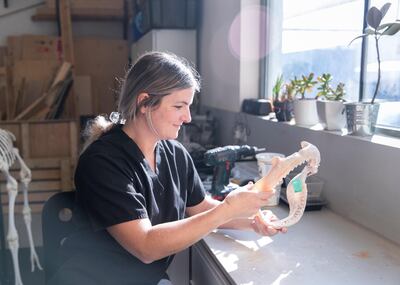
Ms Berners-Schultheis and a team of four taxidermists also collect samples for genetic research and restore old taxidermy collections – such as political gifts received by the UAE decades ago.
They also prepare exhibits for museums, universities and the Ministry of Climate Change and Environment.
"We carry out a lot of histology and pathology investigations and work out how we can best present animals for education purposes," said Ms Berners-Schultheis.
"In the past 10 years we have had two dog owners request to have their pets mounted.
“We try not to encourage that because even if we do our level best to make it look as close to the real thing as possible, it will never truly be your pet again.
"To give you an example, working on a tiny dog will take months and could cost an owner about Dh10,000."
Ms Berners-Schultheis, who has been working at the laboratory for 12 years, said she could always tell if an animal has been treated well or not.
Scars, bone damage and hair loss usually indicate a tough life.
In the early days, she said, a lot of the animals had died as a result of mistreatment or abuse. But with today's animal welfare laws in place, such cases are few and far between.
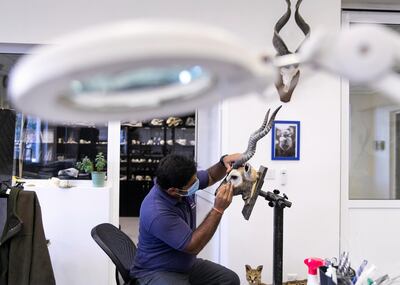
So how does a typical day pan out?
On arrival, dead animals are sent for a post-mortem examination.
"Once the post-mortem is done and we have permission from the owner to proceed to the next stages, we take the animals to the tanning room," said Ms Berners-Schultheis.
“Here, we prepare the skin for mounting and use chemicals, such as an aluminium tanning agent, to preserve it.
“Then it is either freeze-dried for later use or we start work on it immediately.”
There is a workshop on site that stores a range of animal carvings, similar to shop mannequins, which are used to hold the skin during the mounting phase.
Each is carefully carved to fit the animal's skin. Eyes are custom-made and detailing such as tear ducts and eye glazing is done on site using paints and clear gloss.
“When the skin is mounted on the carving, it tends to move or slip off so we often use glue and pins to keep it in place,” Ms Berners-Schultheis said.
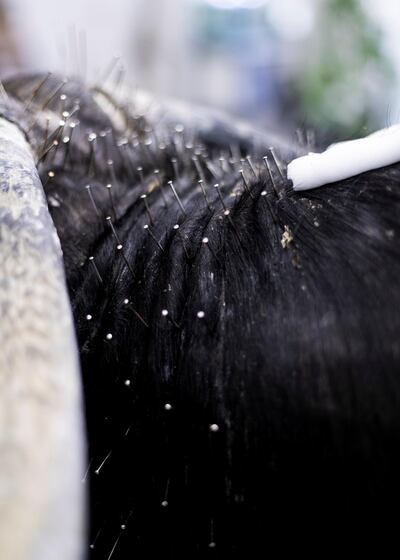
As we walk around the boardroom, she points to the head of a huge Cape buffalo, its face covered with pins.
Although just one head is on show, it came as part of a pair from a local breeder – a male and female that died of natural causes.
Each feature of the buffalo's imposing face has been expertly detailed using a layer of clay, which sits between the carving and the skin.
The bull's expression is melancholy as though he is pining for his female companion.
The reconstruction cost about Dh22,000 to produce and required months of hard work.
When it comes to the most unusual requests for animal mounts, there have been many.
“We were asked to do a cama once,” said Ms Berners-Schultheis.
"It is a cross between a male dromedary camel and a female llama.
“It was one of the only camas bred by artificial insemination in the country about 15 years ago and it died of old age.
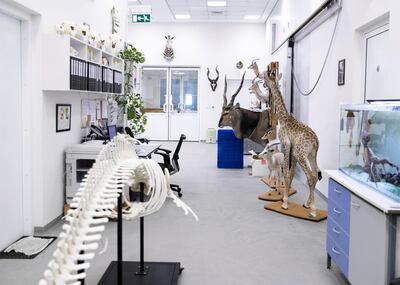
“It was a weird-looking thing and had a huge under-bite. It took about a year to mount as we didn’t have any huge reference points to work against because it was a new animal.”
The team has also preserved camels and a houbara bustard for the purpose of collecting semen.
"Collecting semen from camels can be quite tricky and dangerous, so we were asked to create a sitting female camel to collect the sample," she said.
"The male camel would mount the female camel just like in a real-life mating.
“It was odd because we had to spray the female with urine to attract the male, but it worked well.”
More than a century after the practice reached the height of its popularity, Ms Berners-Schultheis is among a new wave of taxidermists who are changing people's perceptions about their profession.
She is a world away from the stereotyped mustachioed man in Victorian hunting attire.
And interestingly, she fell into the profession by accident.
“I wanted to become a pathologist, but my A-levels weren’t good enough to study it right away so I enrolled in a taxidermy course at a university in Germany,” she said.
“I enjoyed it so much and quickly realised it was something I wanted to pursue full time.
“I’m glad I stuck with it because I genuinely learn something new every day.
"For example, did you know the osprey and the owl are the only birds without a crop? That's the bulge in the neck where birds store their food for predigestion.”
